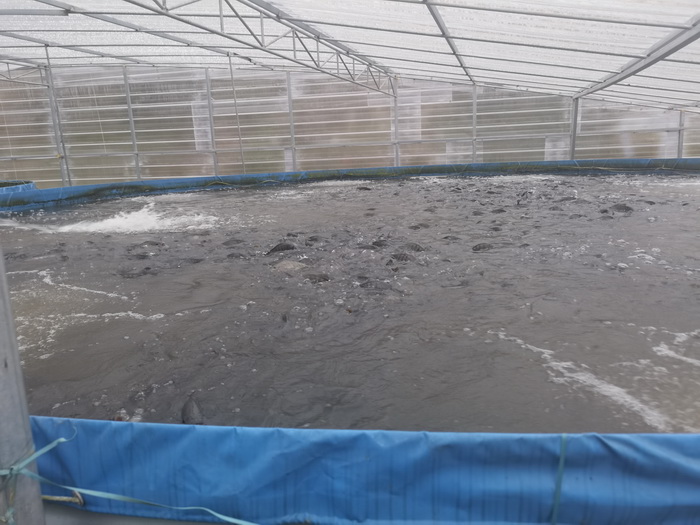What is the relationship between the design of the circulating aquaculture biofilter and the culture density?
Biological filtration is an indispensable link in aquaculture, because aquaculture wastewater contains a large number of organic matter and ammonia nitrogen and other harmful substances, if not treated, will cause great harm to the water body and aquaculture organisms. The biological filtration system can effectively transform these harmful substances into harmless substances, so as to ensure the clean water and the health of aquaculture organisms.
Biological filtration system mainly relies on microorganisms to degrade and transform harmful substances such as organic matter and ammonia nitrogen. These microbes grow on certain carriers, such as fillers, sponges, quartz sand, etc., forming a large microbial community. As wastewater passes through these carriers, microorganisms metabolize the organic matter and harmful substances such as ammonia nitrogen in it, converting it into harmless substances such as carbon dioxide, water and nitrates. This process is called biodegradation or biotransformation. Therefore, the biological iltration system is a natural, environmentally friendly and efficient way to treat wastewater.
There are many factors to consider when designing a biological filter. The first thing to consider is breeding density. Breeding density refers to the number of farmed organisms in a given area or volume. The higher the density of farming, the more waste water will be produced, so larger biological filters will need to be designed accordingly to treat this waste water. In addition, the design of the biological filter should take into account the amount of water, water quality and other factors to ensure that the biological filter can effectively treat wastewater.

When designing a biological filter, the following aspects need to be paid attention to:
1. Selection of filler: The filler is the carrier of microbial growth in the biological filter, so it is very important to choose the right filler. Commonly used fillers are quartz sand, quartz grains, ceramics and so on. Different fillers have different surface area and porosity, which have great influence on the growth and metabolism of microorganisms.
2. Flow rate control: Flow rate refers to the speed of wastewater passing through the biological filter. Too fast flow rate will cause microorganisms unable to attach and metabolize effectively, thus affecting the treatment effect. If the flow rate is too slow, the waste water will stay in the biological filter for too long, which is easy to cause problems such as blockage and oxygen shortage. Therefore, it is necessary to control the appropriate flow rate according to the breeding density and other factors.
3. Oxygen supply: Biodegradation and transformation require the participation of oxygen, so an adequate supply of oxygen should be maintained in the biological filter. Generally, aeration equipment or surface aeration is used to ensure oxygen supply.
4. Water quality monitoring: The treatment effect and stability of biological filter are closely related to water quality. Therefore, when using biological filter to treat wastewater, water quality needs to be regularly monitored to discover and solve problems in time.
In short, biological filtration is an indispensable part of aquaculture. The reasonable design of biological filter can effectively degrade and transform the harmful substances in the wastewater, so as to ensure the clean water and the health of aquaculture organisms. At the same time, it is also necessary to make reasonable adjustment and management according to culture density, filler selection, flow rate control, oxygen supply and other factors to ensure the normal operation and stability of the biological filter.
